All about Rice in China
When people think of China they often associate it with the eating of rice, so here we describe the growing and cooking of rice in China.
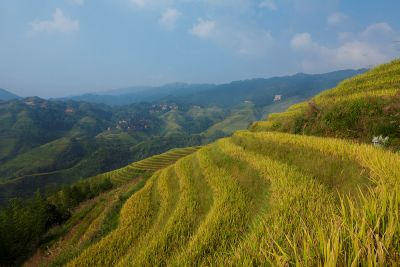
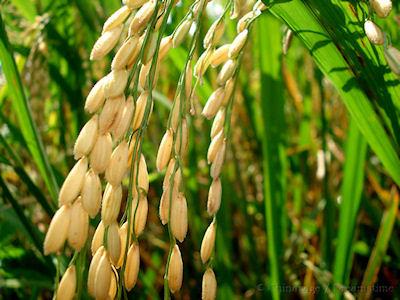
Where rice is grown
Rice only grows well in the south of the country, in the north it is too cold and wheat is the staple cereal crop and eaten in the form of noodles and bread. One reason for the strong association of China with rice is that many Chinese who settled abroad and ran restaurants came from the south, particularly from Canton (Guangzhou)and so their menus include rice. For centuries the rice growing areas of southern China provided the food needed by the people in the north; the Grand Canal provided the transportation for this vital commodity from south to north.
Here is a map showing in green the main areas where rice is grown in China. The areas where rice is the predominant crop are shown in dark green; it also shows where two or more crops of rice can be grown in the southernmost region.

History of rice cultivation in China
The tradition of rice growing goes back to earliest times (probably 10,000 years), the legendary Emperor Shennong was said to have initiated the planting of rice. Chinese civilization had at this time spread to the lower Yangzi where the climate allows rice plants to be grown. Initially, in the Zhou dynasty only the rich could afford to eat rice but by the Han dynasty it had become a staple food for everybody. Rice is easy to store and cook, and if combined with soybeans provides basic nutrition. Many books about the cultivation of rice have been written over the centuries, including Daopin (‘Strains of Rice’) by Huang Xingsi from the Ming dynasty. The success or failure of the rice harvest was key to the health of the nation. Too much or too little rain would lead to poor rice harvests and so to extensive famine.
Rice cakes are traditionally eaten at the New Year festival both at the start and at the end ( Lantern festival) when they are known as Yuanxiao or Tangyuan ➚. Rice in the form of Zongzi ➚ made of glutinous (sticky) rice is eaten at the Dragon Boat festival and also at the Chongyang festival.

Growing rice in China
Over the centuries irrigation technology developed to maintain the level of water in the paddy fields (水稻 shuǐ dào) necessary for rice cultivation. Rice does need huge amounts of water to grow, the flooding is principally to suppress weeds - it just happens that rice is more tolerant to growing in water than most other grasses. Irrigation is used in about 90% of the land used to grow rice. The usual depth of water in paddy fields is 6 inches [15 cms]. Irrigation was controlled by foot powered pumps as early as the Song dynasty. Paddy fields are often constructed by terracing of the landscape to increase the area suitable for growing rice. Here the paddy fields are narrow strips following the contour lines of the steep hills. It is the need for a naturally high rainfall or continuous irrigation that limits where rice can be grown.
Rice is not exclusively grown in China, it can be grown anywhere which is frost-free and receives enough water. China grows about 28% of the world's total rice production on a land area sized an impressive 298,997,512 acres [121,000,000 hectares]. A typical yield of 6.7 tons per hectare is achieved when fertilizers are used. However artificial fertilizers have limited effect on the yield. The seedlings are usually planted out in April and harvested in September. In southern areas, where there is sufficient warm weather to raise two harvests in a single year, it is grown from March to June and the second crop from June to November.
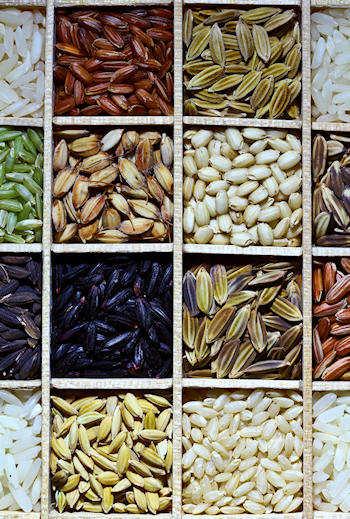
Botanically speaking the rice plant of the most widely grown variety of rice is Oryza sativa ssp. Japonica ➚. Over the centuries many different varieties (strains) of rice have been selectively bred. So now there are over 50,000 of them, one for every possible location and climate. Some are selected for taste, some for fast growth and some for particular soil types - for example for burnt ground. Pearl rice has small chewy grains and is favored in the north, while sticky glutinous rice is favored in the south.
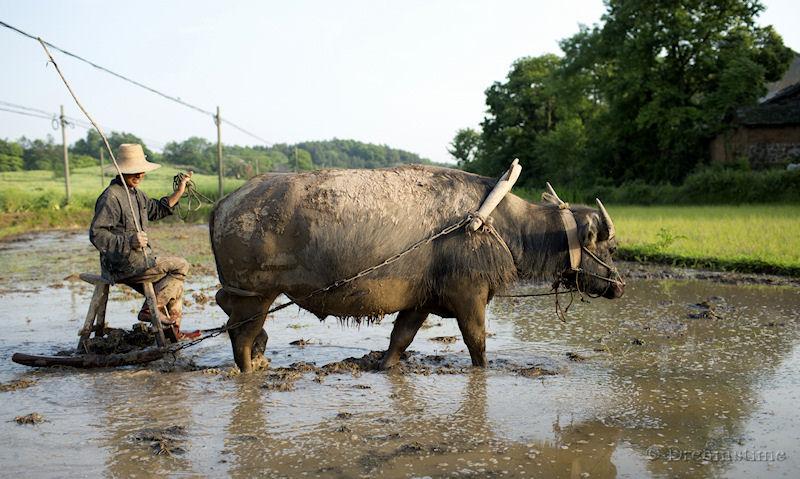
Paddy fields and carp
In some areas water buffalo are still used to plow the ground in Spring. The buffalo's manure helps to keep the soil fertile. The rice is grown from seed in specially protected shallow water. After about 40 days the seedlings are planted out in the paddy field. In some regions fish are introduced into the paddy fields (carp and goldfish) as the fish eat the insect pests and can be harvested at the same time as the rice, giving the farmer a useful bonus. Harvesting involves draining the field, waiting for the rice to dry and then cutting it and gathering into sheaths. The grain is then separated from the stalks and laid out to dry. When it is dry the husks are separated from the chaff by a process called winnowing. All these processes used to be done by hand, the cultivation is very labor-intensive. In the lowland, flatter areas these processes have been mechanized, however in the remote south-western mountainous areas rice cultivation is still done by hand.
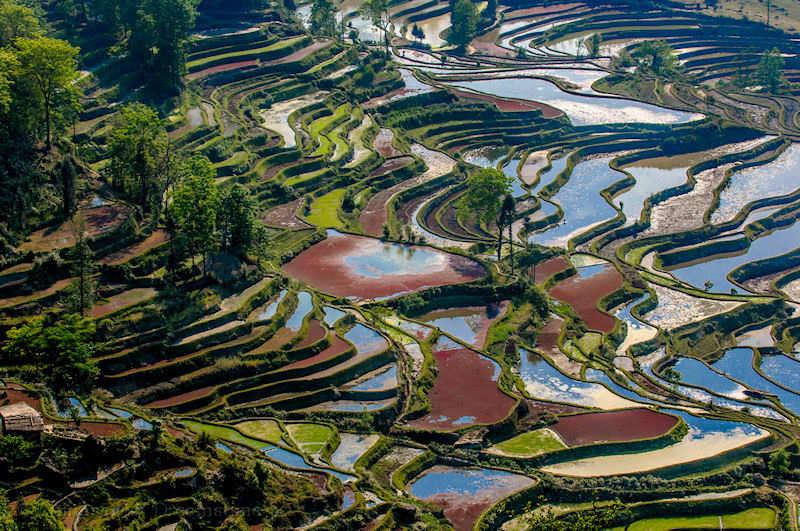
Uses of rice

Glutinous rice ➚ grown in the south east is 'sticky', forming a lump on cooking and is often made into packages wrapped in bamboo leaves. Rice forms the bulk for a Chinese meal, it adds a neutral component allowing the sweet and savory qualities of the other dishes to the appreciated. Rice is not normally eaten on its own and is used only to fill the stomach after the choice and tastiest food has been eaten.
The starch from rice cooking has been used in the very foundations of buildings as it was used as a constituent of mortar. The leaves of the plant can be made into a fine edible paper: rice paper ➚. The rice grains can be pounded into rice flour ➚ and then made into such things as rice noodles. Wines and spirits can be made by fermenting it; the rice wine from Shaoxing, Zhejiang is the most famous example.
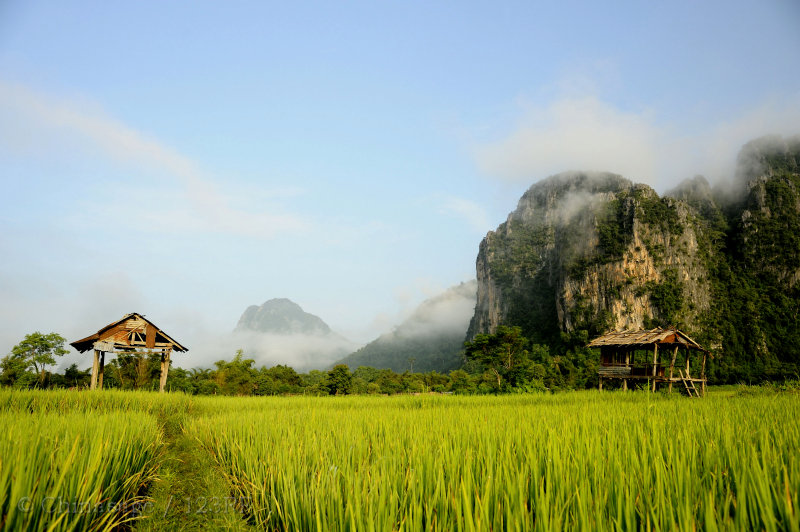
Modern times
Over recent years imported rice has become cheaper than home produced rice, and so the cultivation on poor land has become uncompetitive. This trend has accelerated due to the pressure for acquiring land for industry and housing which reduces the area of flat land for cultivating rice in the southern coastal fringe. The more efficient rice producers (due to more favorable climate) in neighboring Vietnam, Thailand, Burma and Cambodia can out-compete China and so it is likely that China will be the leading importer of rice in the world for many years to come. In fact rice imports go back a long time, they were documented as long ago as 1924.
